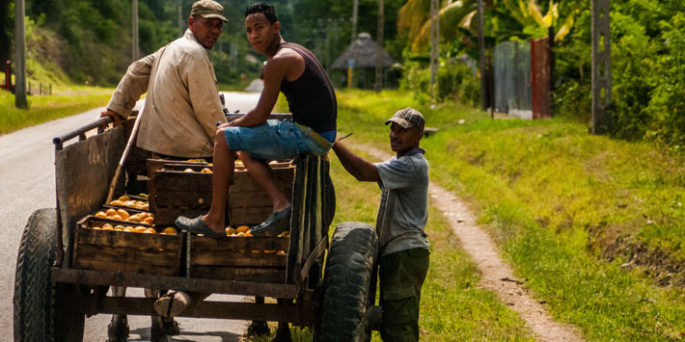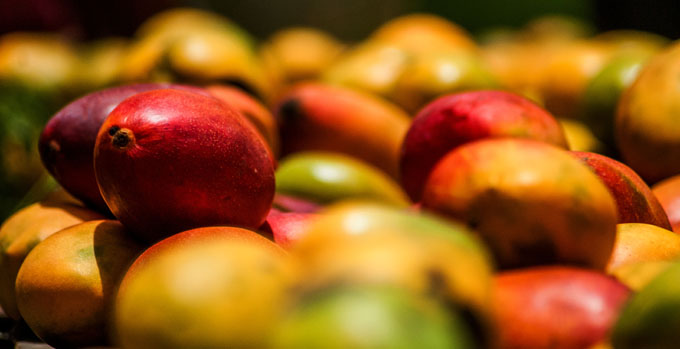
The harvests are ready, but lost
LAS TUNAS — Judging by the headlines, the wasted harvests in Cuba reveal that, to a certain degree, the people involved in the collection, transportation, sale or processing of legumes and fruit don’t know what to do when the earth produces an abundance of foodstuff.
Painfully true
It couldn’t have been pleasant for several Cuban farmers to be the deliverers of testimonies published recently.
“How can I secure the right to see my efforts respected?” asked Agustín Sanz Rodríguez, a resident in the western city of Madruga in Mayabeque province.
He complained because his cooperative would no longer buy the 20 tons of fruit contracted, because of problems in the processing industry. Consequently, the fruit would not go to the intended destination; worse yet, it would rot.
Late in June in Guantánamo, at the opposite tip of the island, two cooperatives in the city of Manuel Tames had to resort to “Plan B” when the intended recipient of their mangoes, the Guaso Fruit Cannery, told them it couldn’t accept their product because it lacked the containers needed to store the mango pulp.
Luckily, the local Preserves and Vegetables Company took on the job, though not without difficulty. According to local television, some of the mango pulp had to be rushed to the company’s branch in Sancti Spiritus province because the license for the software that ran its filling machines had expired.
One month later, the situation had not improved much, said Orlando Bombalé Luna, president of the Credits and Services Cooperative (CCS), Ángel Bouza Calvo.
“We have many problems that are not at all new,” he said. “They’ve become worse because of the paralyzation of industries and the lack of containers.”
As of mid-July, the province of Guantánamo had given up for lost 1,600 tons of mango, said sources at the Provincial Farming Delegation there.
Earlier in the year, tomato farmers in Guantánamo went through a similar situation, when the 12,000 tons collected exceeded the most optimistic predictions. A reporter for the national media opined that even more could have been collected, were it not for the lack of foresight — and containers.
More of the same
In its mid-year session, the Cuban National Assembly dealt again with the issue of wasted harvests. At that forum, we heard again the criticism aimed by the deputies at a situation that had been denounced in various sites and at various times.
“Some products, like the mangoes, are lost on the fields because of insufficiencies in the mini-industry,” said Graciela Rodríguez, a representative from Banes (Holguín) with long experience as a director of farm collection industries.
Jorge Antonio Pérez, a farmer for the CCS Aracelio Iglesias, told the Assembly about the technical obsolescence of the plants that process farm products.
“Investments have been made in the dairy industry that are welcome,” he said, “but nothing has been done to benefit the legume processing industry, which requires a more economical investment with high value added.”
Iglesias’ counterpart in Granma province, Yaqelín Puebla, reported a similar situation and stressed that “the producers and the people have demanded explanations for all that.”
“The coming year, we’re going to see greater production and what are we going to do? Will we report the same problem?” asked Israel Pérez. The voice of this deputy from Yaguajay (Sancti Spiritus) has been heard in previous debates about the problem. In July 2016, he expressed himself in similar terms.

Shortages and disorganization
A report from the Basque NGO Mundubat, issued in May of this year, said that 30 percent of the total production of foodstuff by Cuban agro cooperatives goes to waste during the phases of harvest and post-harvest.
The evaluation, made jointly with the National Association of Small Farmers (ANAP), indicated that an additional 27 percent of the foodstuff went to waste during the phase of distribution to rural and urban markets. We’re talking about 57 percent of the cooperative production — the largest in the nation — going into the waste bin.
Based on data supplied by the National Group of Urban and Suburban Agriculture between 2013 and 2014, the World Food Organization concluded that the national average of losses in the post-harvest phase in Cuba was 2.6 percent. In the wholesale markets and local markets, the waste ranged between 3 percent and 20 percent.
In January 2016, the Ministry of Agriculture initiated a program of measures to reactivate its commercialization infrastructure, so as to regain the land lost after years of believing that the cooperatives, by themselves, could assume the direct distribution of viands, vegetables and fruit in the nation’s markets.
Data reported in 2012 indicated that waste in the banana and plantain industry exceeded 4 million pesos.
Nelson Concepción de la Cruz, director general of the National Collection Union (Acopio), said that regaining some of the equipment and personnel took a year and a half. That action considerably increased the amounts of food collected, but he couldn’t say the same about the processing plants, as admitted to the National Assembly by leaders of the Ministry of Food Industry.
They acknowledged that, while factories in Pinar del Río, Ciego de Ávila and Sancti Spiritus were modernized, the emphasis was on regaining the productive capacities for dairy and meat products. Little was done to improve the packing of fruit and vegetables, whose demand tripled in the past two years as a result of increased harvests.
“To improve this situation, we decided to pack in large containers to protect the largest amount of pulp, and to use bottles in the mini-industries,” said Eloy Álvarez Martínez, the minister of Industry.
The pressure of public opinion gave us a glimpse of the hindrances that coexist with the material shortages.
“We are aware of the tough situation in the nation’s economy, but what people saw in the newscast was a lack of organization. The producers’ motivation faded […] after they learned that they’re not the only ones who lost mango production,” said Orlando Bombalé, referring to national TV newscasts about a situation similar to his but in the neighboring province of Holguín.
Official data show increases in agricultural production, basically in tubers, veggies, plantains and other fruit. However, the food industry in charge of processing those products is not up to the task. Nor have we seen any numbers that indicate progress in foreign-investment projects to reactivate the existing factory systems.
The concern over wasted harvests is shared by all. Reports from the experts and the topic’s presence in the domestic media give an account of that.
Public funds devote no less than $1 billion a year to the importation of food; consequently, the national production of food is a priority. An economy with anemic levels of growth cannot afford to allow harvested produce to go irremediably to waste.
PHOTOS BY THE AUTHOR: Mangoes sold by the roadside in the city of Manuel Tames, Guantánamo.
Progreso Weekly authorizes the total or partial reproduction of the articles by our journalists, so long as the original source and author are identified.

